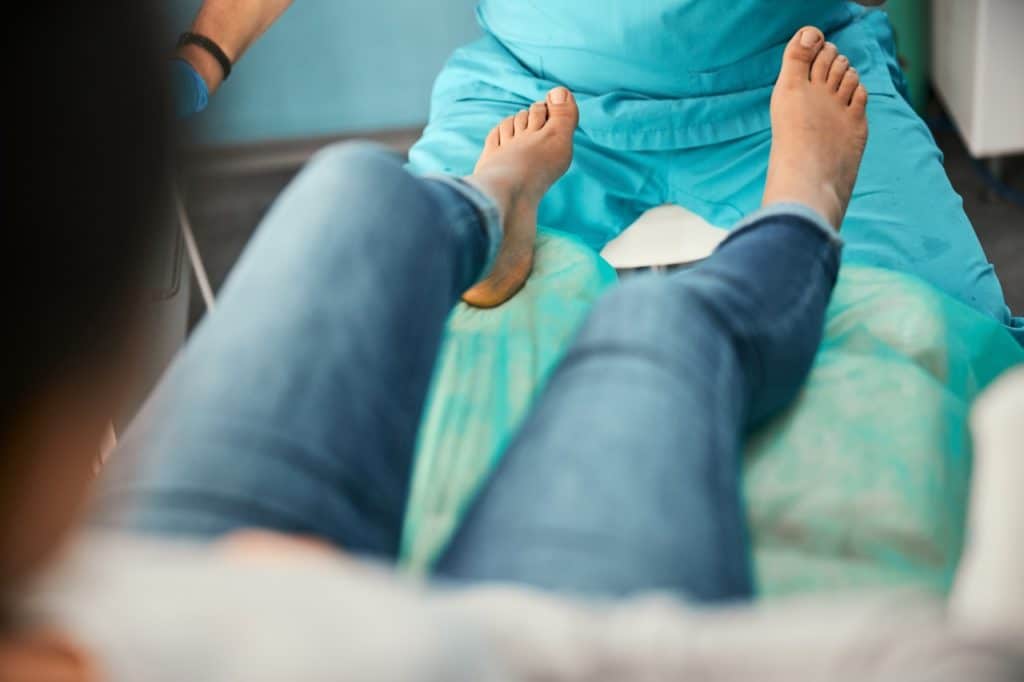What is a verruca?
Definition and characteristics of a verruca (plantar wart – medical name)
Verruca is one of the most regular conditions we see and successfully treat at Waverley Clinic. Usually, the verruca has been treated at home with topical ‘paint-on type’ treatment from the pharmacist, which has not worked.
Plane warts are round, smooth, slightly raised with a flat top, and are most common on the face and the backs of the hands.
Verruca is a viral infection and is usually found on the soles of the feet or toes. But the same infection can be found on the hands or any other part of the body (genital warts) and is called a wart.
Causes of verrucas
Role of human papillomavirus (HPV) in verruca development
The viral infection that causes verruca is called the human papillomavirus (HPV virus) and is very contagious, meaning it can easily spread from person to person. Even touching a verruca on your feet could lead to another infection on the hand and the formation of a wart.
Remember, verruca or warts should always be treated carefully. The HPV viral infection is highly contagious and can be picked up in a wide range of places. In particular, it spreads quickly through barefoot contact with the virus that is deposited on the floor by another carrier—for example, through communal shower areas, swimming pools, changing rooms, or hotel bathrooms. Contaminated surfaces in these areas can harbour the virus, increasing the risk of transmission to other people.
The virus can also survive outside of the human body for a significant amount of time, meaning that even shoes or trainers can carry the infection and lead to its spread!
The difference between a verruca and a corn
There can be confusion between verruca and corns. Both can be painful under pressure and appear similar to the untrained eye. Corns are layers of dead skin built up from friction wear.
When it comes to pressure, a corn is more painful when direct pressure is applied. However, a verruca responds more to sideways/lateral pressure.
Identifying a verruca
A corn is an intense formation of a pellet of hard callus-type dead tissue. These form in areas of increased pressure, for example usually on the underside of the feet or in between the toes.
Usually, a corn develops because of pressure and can be successfully removed by scalpel blade.
In contrast, a verruca is a viral infection picked up in areas such as changing rooms. Breaks in the skin or dry, cracked skin may increase the risk of picking up the virus. Verrucas are rich in blood vessels, often appearing with tiny black dots, which are blood clots in tiny blood vessels under the skin. They also form a thickened area of tissue with a typical ‘cauliflower-like’ appearance. Viral verruca treatment is more complex and will be covered later in this blog.
Risk factors for developing verrucas
Arguably, the greatest risk factor related to picking up the HPV virus and developing a verruca is being in a potentially infective environment. This is any location where someone with a verruca has deposited the virus on a floor surface. You may pick up the virus by direct contact as you walk barefoot.
This may be a gym changing room, school gyms and changing rooms, communal showers and jacuzzis, swimming pools, hotel bathrooms, shoe shops, trying on shoes, or sharing footwear – the list is endless.
A weakened immune system may also be an increased risk factor
Diagnosis of Verrucas
Diagnosis can be difficult. In my experience, many mistakes are made, including confusing a verruca for a corn or a corn for a verruca. As the treatment is totally different, this is a significant problem. Verruca can grow and spread, forming a structure called mosaic verruca, further complicating diagnosis.
I would advise accurate professional diagnosis via a podiatrist, pharmacist or GP.
Verruca Treatment options
MYTH – Firstly, there is a myth that the verruca (or wart) treatment kills the verruca or viral infection. The HPV virus can’t be killed, like other viruses, such as the common cold or flu. Verruca treatments are based on the principle that trauma to the verruca tissue (acid, freezing, laser, microwave) stimulates the patient’s immune system, and the immune system eradicates the HPV virus.
Therefore, typical verruca treatment methods target the infected tissue to ‘jump start’ an immune system response. This process stimulates your body’s immune system, effectively eradicating the HPV virus, verruca or wart infection. The ultimate goal of these treatments is to get rid of a verruca by encouraging the immune system to respond to the affected area.
Salicylic acid treatments (liquid, gel or ointment)
- Over-the-counter treatments containing salicylic acid from the pharmacy.
- Prescription-strength salicylic acid treatments are also available via professional podiatry treatment application.
Cryosurgery (freezing treatment) using liquid nitrogen
- Over-the-counter freezing treatment.
- Liquid nitrogen freezing treatment via professional treatment.
Laser Therapy
- Specialist laser therapy to eradicate verruca treatment via professional treatment.
Microwave Therapy
- Specialist treatment via professional treatment.
Treating verrucas in children
Firstly, due to their lifestyle, children are more prone to developing verruca plantar warts. Mixing with other children or siblings in sports, changing rooms, swimming pools, etc. simply increases the risk, and therefore, children often develop verrucas.
Treatment options for children
The first thing to say is children do not respond well to pain, and verruca treatment must be as pain-free as possible. So, treatment choice is important with these options: –
- OTC Salicylic acid treatments via pharmacy advice.
- OTC Cryotherapy treatments via pharmacy advice.
If verruca does not resolve
- Stronger podiatry clinic salicylic acid treatment.
- Colder podiatry clinic cryotherapy.
CAUTION
Microwave therapy and laser treatments are very painful – most children will not tolerate these options. Patient compliance is always essential.
Treatment options for adults
These are the same options as for children. More painful treatments are usually better tolerated by adults. However, all treatments work in the same way: by stimulating an immune response to eradicate the viral infection.
- OTC Salicylic acid treatments via pharmacy advice.
- OTC Cryotherapy treatments via pharmacy advice.
If verruca does not resolve
- Stronger podiatry clinic salicylic acid treatment.
- Colder podiatry clinic cryotherapy.
- Microwave therapy.
Treatment myths
Numerous verruca or wart treatments can be found online. One idea is to cut off the verruca’s oxygen supply by covering it with nail varnish or duct tape. However, the verruca’s oxygen supply comes from its blood supply, and these ideas are false. There are even ‘Wart Charmers’ who offer eradication via charms and spells.
How does the Human Body naturally eradicate Verrucae & Warts?
Immune response verruca / wart eradication
Our immune response may successfully target and eradicate the HPV virus that causes verrucas and warts. The body’s immune system can sometimes fight off the virus by itself, which is why the NHS decided a few years ago to stop treating verrucas.
Unfortunately, this doesn’t always happen, leading to people with verrucas and parents of children with verrucas seeking professional help and advice.
If your or your child’s verruca does not resolve or you need experienced professional advice, one option is to contact a podiatrist.
Book with the Waverley Clinic in Farnham to get your Verruca treated
Finally, if you think you or your child may have caught a verruca it is important not to worry but instead seek professional medical advice immediately. Waverley Clinic will discuss treatment options and help enable successful verruca resolution as soon as possible.
Please contact Waverley Clinic for a verruca and verruca treatment consultation by calling 01252 716611.

